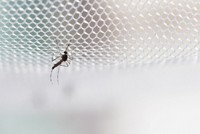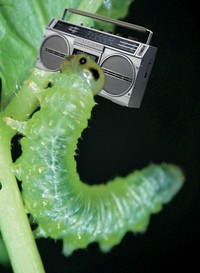Advertisement
Grab your lab coat. Let's get started
Welcome!
Welcome!
Create an account below to get 6 C&EN articles per month, receive newsletters and more - all free.
It seems this is your first time logging in online. Please enter the following information to continue.
As an ACS member you automatically get access to this site. All we need is few more details to create your reading experience.
Not you? Sign in with a different account.
Not you? Sign in with a different account.
ERROR 1
ERROR 1
ERROR 2
ERROR 2
ERROR 2
ERROR 2
ERROR 2
Password and Confirm password must match.
If you have an ACS member number, please enter it here so we can link this account to your membership. (optional)
ERROR 2
ACS values your privacy. By submitting your information, you are gaining access to C&EN and subscribing to our weekly newsletter. We use the information you provide to make your reading experience better, and we will never sell your data to third party members.
Biochemistry
Newscripts
Dance music deters mosquitoes, and hip-hop gives cheese a fruity flavor
by Samantha Jones
April 12, 2019
| A version of this story appeared in
Volume 97, Issue 15
Bloodsuckers don’t dance

Spring is in full swing here at Newscripts headquarters in Washington, DC, but there have been some unwanted companions during our evening strolls among the cherry blossoms: mosquitoes. To take precautions against these disease-carrying bloodsuckers, the Newscripts gang applies bug repellent and covers up with long sleeves and pants as the sun goes down. But one team of researchers took a noisier approach, discovering that electronic dance music (EDM)—specifically, Skrillex’s “Scary Monsters and Nice Sprites,” a song released back in 2010—was a real buzzkill for mosquitoes (Acta Trop.2019, DOI: 10.1016/j.actatropica.2019.03.027).
Low-frequency vibrations have been shown to facilitate mosquito mating rituals, but until now, no one knew if music put these pests in the mood (Curr. Biol. 2009, DOI: 10.1016/j.cub.2009.04.021). A team led by Universiti Malaysia Sarawak’s Hamady Dieng examined the effects of the Skrillex EDM track on Aedes aegypti’s foraging, host attack, and sexual activities.
Female Aedes aegypti mosquitoes—the species notorious for spreading Zika virus—were placed in two environments, one with no music and one with a speaker playing Skrillex. Also in those environments were a hamster and a male mosquito. With EDM blasting, female mosquitoes were slower to make initial feeding attempts on the hamster and fed less overall. They also had significantly less sex. Could this be an alternative to environmentally harmful pesticides? Only time, and many more studies, will tell.
Judy Lee, who studies the effects of sound on crystallization at the University of Surrey, wonders how varying the type of music, changing the volume, and applying simple mechanical vibration would affect the mosquitoes. “If I was forced to listen to sounds that I do not consider music to my ears, then I too would lose the motivation to do the things I normally would,” she tells Newscripts.
When Lee was first contacted by the Newscripts team on April 1 to comment on the paper, she was convinced the request was an April Fools’ joke (we don’t blame you, Judy). But on closer examination, she saw the paper was peer reviewed—and released in March. And as it turned out, this strange, seemingly click-baity finding brightened up her day. “The abstract and highlights and brief glance did put a smile on my face,” Lee admits.
This Newscripts author is traveling to Bali, Indonesia, later in April and has been warned about the risk of contracting a mosquito-borne illness. After much contemplation, wearing heavy-duty insect repellent has won out over wearing a speaker blasting Skrillex. To my boyfriend taking the trip with me: you’re welcome.
Flavor à la hip-hop

The flavor behind a wheel of cheese is the result of key contributors like mold, bacteria, and enzymes all having their way with milk. A collaborative effort in Switzerland last month added music to the mix. Käsehaus K3, a local cheese house, and Bern University of the Arts’ Sound Arts program came together for an annual project centered on “regional identity and artistic education.” For this year’s project the partners exposed maturing cheeses to sound over the course of several months and then presented their results to the public.
The team began with nine wheels of cheese, all created with milk from the same farmers and processed in the same vat. Over the course of about 6 months, each wheel was kept in a separate box and exposed, via mini-transmitters, to songs from a range of musical genres on a 24/7 loop. Tunes included Mozart’s The Magic Flute, Led Zeppelin’s “Stairway to Heaven,” A Tribe Called Quest’s We Got It from Here, techno and ambient tracks, and low-, middle-, and high-frequency sound waves. A control wheel was exposed to silence, also maturing in a box of its own.
A star-studded team of judges, including Swiss TV chef Benjamin Luzuy and Stefan Berger, the mayor of Burgdorf, Switzerland, sampled the cheeses. According to the judges, the control cheese had the strongest smell and taste, but the hip-hop wheel possessed the strongest flavor of the music-exposed cheeses and had a fruitiness that made it stand out from the rest.
Advertisement
Samantha Jones wrote this week's column. Please send comments and suggestions to newscripts@acs.org.





Join the conversation
Contact the reporter
Submit a Letter to the Editor for publication
Engage with us on Twitter